Psychosis Or Projection By Dee Mani-Mitchell
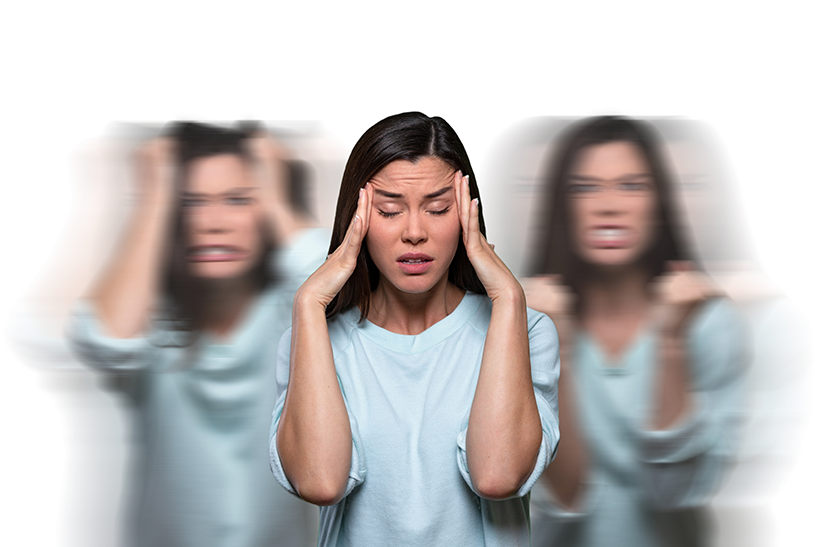
It is commonly know that smoking cannabis can produce several effects in the average person that resemble some of the symptoms of psychosis.
These include anxiety, paranoia, and delusional beliefs. Generally, these effects are relatively short-lasting, and there are no remaining problems after the herb has worn off.
However, researchers are now concerned that there may be a small proportion of the general population who are much more vulnerable to the effects of cannabis. With enough use of the drug, these people may develop long-lasting or even permanent psychosis.
Several major international studies followed many healthy young people, mostly in their teens, for ten or more years. These studies found that heavy cannabis users were more likely to develop psychotic disorders, such as schizophrenia, as they got older than those who didn’t use it. However, what researchers have learned from these studies is that while cannabis can potentially cause psychosis, it would only be prevalent in a select group of naturally vulnerable people.
Sadly, with unsatisfactory levels of studies, we’re not quite sure what makes people vulnerable to the effects of cannabis. As with most forms of illness, there is a complex mix of genetic factors and the impact of the environment you are surrounded by, and psychiatrists may argue that they have some pretty good ideas. What they believe is that people who have a stronger predisposition to psychosis are at greater risk.
These people may have a family history of psychosis or may have had previous brief psychotic experiences. Age is an essential factor to take into consideration, and teenagers are more at risk than adults. Scientists have even identified a gene known as Catechol-O-Methyltransferase, which may make a person more vulnerable to the effects of cannabis.
That is, they may have a greater risk after cannabis use in the adolescence of exhibiting psychosis and developing the schizophreniform disorder (like schizophrenia, but lasting no longer than six months). All the above seems plausible, but what if we’ve got it all wrong, and what if what we believe to be cannabis-induced psychosis is actually cannabis-induced projection?
Sigmund Freud
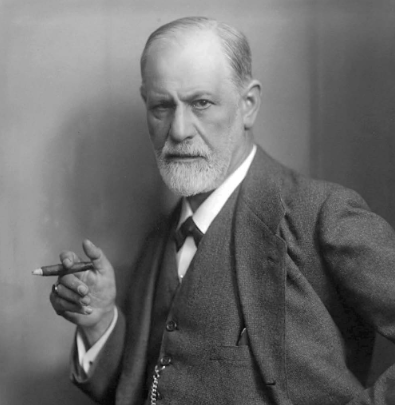
Projection is a psychological defense mechanism in which individuals attribute characteristics they find unacceptable to others. Like other defense mechanisms, projection is typically unconscious and can distort, transform, or somehow affect reality. But, what is the purpose of projection? Sigmund Freud, the famous late neurologist, known as “The Father Of Modern Psychology”, believed projection to be a defense mechanism often used to avoid uncomfortable repressed feelings. Feelings that are projected may be controlling, jealous, angry, or sexual. These are not the only types of feelings and emotions projected, but projection most often occurs when individuals cannot accept their own impulses or feelings.
In modern psychology, feelings do not necessarily have to be repressed to constitute projection. Projection can provide a level of protection against surfaces a person does not wish to deal with. It is relatively common for people to engage in projection from time to time.
Many people who project their feelings on occasion do not do so due to any underlying issue. In some cases, projection can contribute to relationship challenges. Relationships can be in any form and type, such as family relationships, friendships, acquaintanceships, and romantic relationships. The projection could be what the individual is experiencing from either of these connections.
Could cannabis actually be inducing psychosis, or could it induce deep-rooted feelings to be projected to the forefront of the user’s brain? We need to remember that cannabis is a form of plant medicine. More and more people are now using plant medicine to heal from trauma purely because all the toxic junk we hold within us needs to be eliminated for us to recover to become whole.
Cannabis doesn’t get nearly enough use to heal the user’s trauma, despite it being widely recognized and marketed these days as medicine. However, it’s rarely used to its full potential. It is, of course, generally used to numb out or to manage pain - emotional, mental, and physical! This is a kind of medicine for sure, but it can also be useful as part of an in-depth, somatic healing process because of various factors.
Let’s dive deep into these factors:
It’s mildly psychoactive.
Cannabis enables an altered state of consciousness that can be used (if the correct intention is in place) to journey through the sub and unconscious mind. This form of plant medicine is not as dissociative as LSD, mushrooms, or other psychedelics, but an inner journey with cannabis can help supplement good, sober, somatic trauma work.
It temporarily dampens our short-term memory.
Events experienced while “high” can seem so novel or packed with new meaning! That’s because we experience them from a different place within ourselves that is less associated with our habituated self-image. This process can often be painful, and cannabis can be objective about traumatic discomforting experiences.
However, we need to understand that using cannabis as medicine to heal this deep within trauma needs a very different setting and intention than what is more usual in the joint smoking community. Meaning, it’s not about a quick-hit-spliff; it’s about embracing the alone time to gather thoughts or the alone time to journal and journey with others on the same path who have the same intention. It also means that the user needs to inhale and then simply lay down or sit comfortably and track their inner experience.
Katherine Tucker
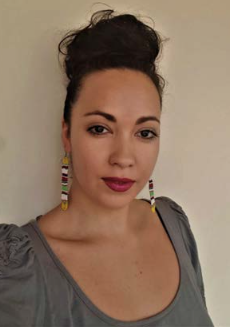
The skill of learning to hunt and experience one’s internal sensations also needs to be understood while not high before it can be applied in an altered state of consciousness.
Reflecting on this article, Katherine Tucker was featured in the last edition of Weed World Magazine within the HighSolation article. Katherine was an impressionable young lady that had a psychotic episode with cannabis when she was 15 years old, which has undoubtedly left a lasting impression. I felt it fitting to offer a more in-depth recollection of the time she experienced.
Katherine grew up in London and went to school in what she calls a “hyper-racialized” environment. Indeed, by the time she reached high school, it was clear that social status depended on race, with Caucasian students being somewhat of a minority and relatively likely to become a target of mockery or abuse. Being of mixed heritage with a racially ambiguous yet more Caucasian appearance, it was impossible to fit in. Katherine did not feel that she was being bullied at the time but looking back, it was clear that constant scrutiny and backstabbing from her peers affected her ability to express herself authentically.
Katherine began experimenting with cannabis when she was around 13 years old, where she would occasionally dabble with a joint amongst her school friends. Whether she used cannabis to block out the toxic trauma that was being impended on her from her schoolmates regularly, or whether she wanted to fit in or generally just enjoyed it, is questionable. Regardless of the reason, all seemed fine up until she suffered from a paranoid psychotic episode at around aged 15.
At this particular time, the joint was pre-rolled and shared around by a group of adolescents that weren’t in her regular team. Soon afterward, Katherine felt different from how she usually felt, and the usual euphoric state was replaced with a heavy form of confusion. She felt suspicious, paranoid, uneasy, and distant! Katherine managed to get herself home, where she describes as barely moving from her bed and barely talking or eating for at least a week due to the intense feelings of being overwhelmed. Reflecting on that brief acute stage of the episode where Katherine could not move from her bed, she admits that her memory is somewhat sketchy as the days all seemed to roll into one.
The memories she still holds will stay with her for a lifetime. From recollection, it was a scorching summer; this was remembered as she had to be persuaded to leave the room to bathe. This may seem like such a trivial task to cause so much anxiety, some may think, however, the episode was so severe that Katherine’s bedroom was the only place she felt safe.
At the time, Katherine genuinely believed that if she left, someone would steal her belongings. A classic symptom of paranoid personality disorder. Incidentally, Katherine does relay that she feels the whole episode was an exceptionally prolonged panic attack.She was frozen in a classic flight or fight response mechanism.
For a 15-year-old child, this was not a healthy structure; she has also admitted that she contemplated ending her life for a brief moment during that time. A moment which pulled her out of the dark thoughts, for no other grounds other than she didn’t know how to go through with suicide. Besides, she didn’t really want to die: there just seemed no other way to escape the panicked feeling.
Katherine was very fortunate that her parents were both mental health professionals who were not convinced by suggestions that she should be sectioned under the Mental Health Act 1983. They tried to help pull their daughter from the depths of despair that she was experiencing with gentle support and encouragement, talking through fears in an attempt to separate the irrational from the rational.
Katherine eventually left the house to attend a GP appointment with her father’s intense emotional support. The diagnosis was cannabis psychosis, and Katherine was referred for counseling.
Katherine’s parents also had a homeopathic friend who gave specific remedies that may have contributed long-term to her recovery, but this was not a quick fix.Some may argue that she consumed too much cannabis for her young developing brain, and it could’ve also been the fact that she had no idea what was in that pre-rolled joint that she participated in smoking.
It’s a well-known fact that skunk (made from un-pollinated cannabis plants that naturally contain much higher and potent THC levels) and spice (a synthetic laboratory-made chemical with a mind-altering effect that mimics the effects of THC) can interact with brain mechanisms differently to regular cannabis strains. Yes, either of these could’ve been what she was smoking to cause the psychosis.
But, we mustn’t detract from the fact that Katherine described her life at school as toxic before that fatal incident. A stereotypical all-girl school environment rife with bullying, intimidation, backbiting, and insincere friendships. A schoolmate that Katherine reconnected with within adulthood even confirmed that “paranoia was a way of life,” and contrary to how isolated she felt at the time, Katherine was not the only one who found the environment somewhat damaging.
It’s common for a toxic school to characterize a culture of fear, purely because there becomes a lack of trust between the teacher and leaders, the staff can often feel vulnerable and always on edge, which filters down to what the pupils think and sense in the classroom, which is no clear sense of purpose.
So the question can rewind to the notion of whether Katherine felt actual psychosis or whether she felt projection? The feelings from the toxic school life could quickly have brought all the entrenched, venomous haunts that she was subjected to daily. This could then present itself in a projector fashion and get all these paranoid feelings to the surface!
The positivity that occurred afterward was phenomenal, as attempts to return to school were detrimental to Katherine’s recovery. Arrangements were put in place for Katherine to sit her GCSEs at a Pupil Referral Unit, which she found to be a more nurturing space. Katherine passed all seven exams that she took, all with A*-B grades, and completed A-Levels and achieved a First Class Honors degree at Middlesex University. Looking back, she doubts that these results would have been achieved had she stayed at that school.
Twenty years on, has this episode deterred Katherine from cannabis? Absolutely not! Now a support worker, nutritional therapist, natural skincare formulator, herbal medicine, and naturopathy student, Katherine enjoys relaxing with a joint, and she understands that as long as cannabis is not relied upon as an escape route, the healing benefits that our sacred plant offers are undeniably valuable.
Katherine has long released feelings of fear and self-judgment around using cannabis because now she is aware that the stresses and strains of life, in general, can send people to darker places than any plant ever could. As a student herbalist, Katherine is also passionate about legalization. She feels that if the stigma of illegality were removed, the average person would have much easier access to healthier ways to enjoy the healing aspects of cannabis as well as the buzz
About the writer: Dee is a cannabis advocate and activist heavily influencing public perception of natural healing with plant medicine. If you have a story that deserves to be heard or you have a questionable topic, reach out to be featured by dropping an email to [email protected].
Written and Published By Dee Mani-Mitchell in Weed World Magazine issue 151







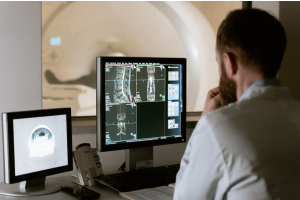
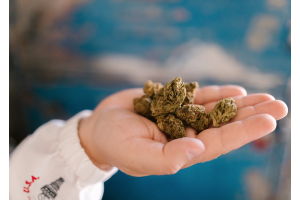
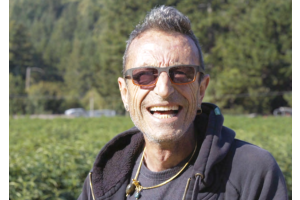


Validate your login